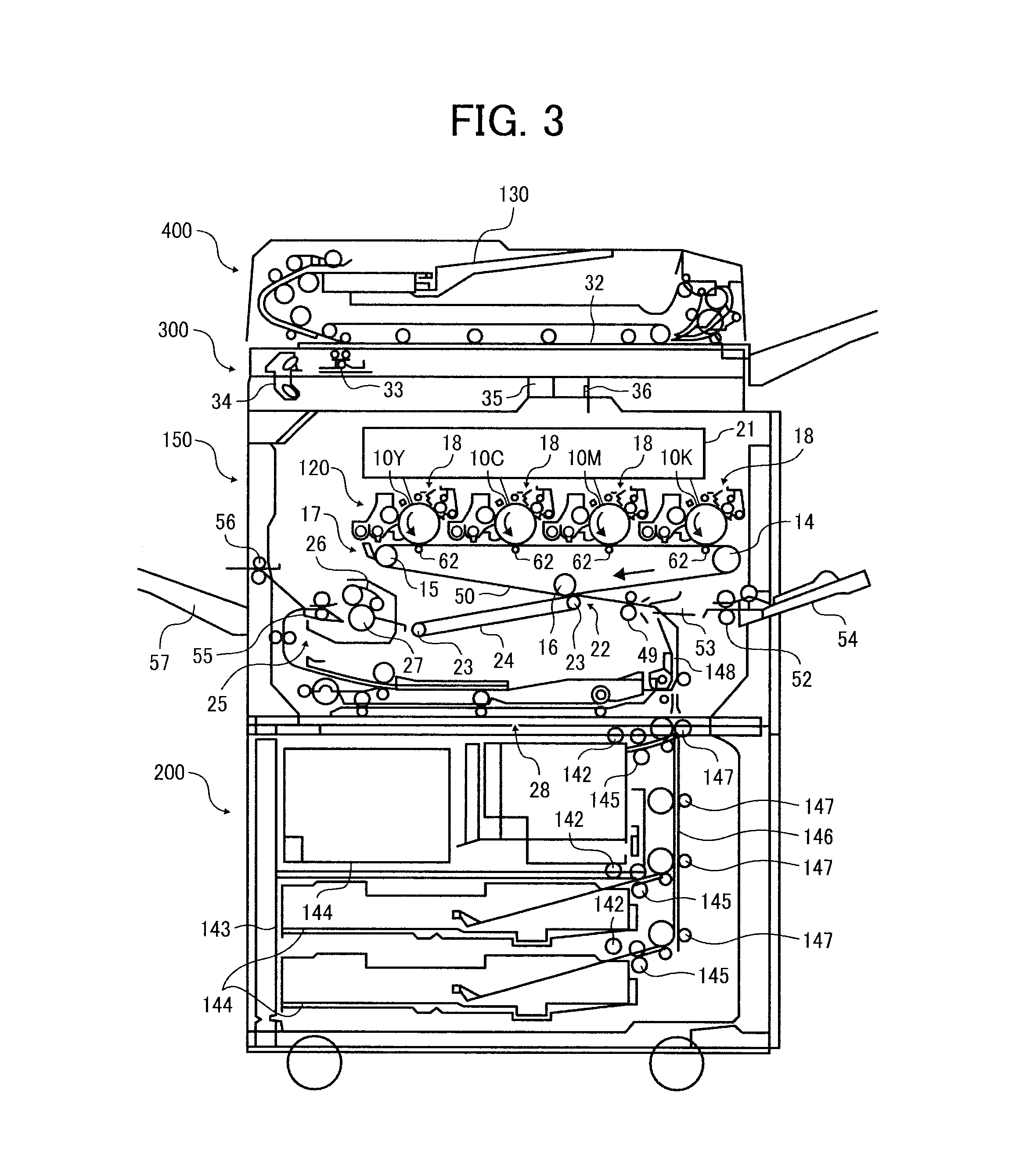Toner and development agent, image forming apparatus, and process cartridge using the same
a technology of development agent and development agent, which is applied in the direction of electrographic process, electrographic process apparatus, instruments, etc., can solve the problems of toner particle size, toner clumping, and inability to produce toner
- Summary
- Abstract
- Description
- Claims
- Application Information
AI Technical Summary
Benefits of technology
Problems solved by technology
Method used
Image
Examples
example 1
Manufacturing Example of Crystalline Resin A1
[0413]Place 241 parts of sebacic acid, 31 parts of adipic acid, 164 parts of 1,4-butane diol, and 0.75 parts of titanium dihydoroxybis (triethanol aminate) as a condensing catalyst in a reaction container equipped with a condenser, a stirrer, and a nitrogen introducing tube to conduct reaction for eight hours at 180° C. in a nitrogen atmosphere while distilling away produced water.
[0414]Next, conduct reaction for four hours while gradually heating the system to 225° C. and distilling away produced water and 1,4-butane diol in a nitrogen atmosphere and continue the reaction with a reduced pressure of 5 mmHg to 20 mmHg until the weight average molecular weight Mw of the resultant reaches about 6,000.
[0415]Transfer 218 parts of the thus obtained crystalline resin to a reaction container equipped with a condenser, a stirrer, and a nitrogen introducing tube and add 250 parts of ethyl acetate and 82 parts of hexamethylene diisocyanate (HDI) the...
example 2
Manufacturing Example of Toner 2
[0502]Place 84 parts of Crystalline Resin A1 and 84 parts of ethyl acetate in a container equipped with a thermometer and a stirrer and dissolve them by heating to the melting point of the resin or higher. Add 20 parts of Liquid Dispersion of Wax W1, 12 parts of Coloring Agent Master Batch P1, and 50 parts of ethyl acetate to the container followed by stirring by a TK type HOMOMIXER (manufactured by PRIMIX Corporation) at a rotation number of 10,000 rpm at 50° C. for uniform dissolution and dispersion to obtain Oil Phase 2.
[0503]Toner 2 having a volume average particle diameter of 5.6 μm is manufactured in the same manner as in Example 1 except that Oil Phase 2 is used instead of Oil Phase 1 to evaluate the performance of the toner and the development agent.
example 3
Manufacturing Example of Crystalline Resin A2
[0504]Place 283 parts of sebacic acid, 215 parts of 1,6-hexane diol, and 1 part of titanium dihydoroxybis (triethanol aminate) as a condensing catalyst in a reaction container equipped with a condenser, a stirrer, and a nitrogen introducing tube to conduct reaction for eight hours at 180° C. in a nitrogen atmosphere while distilling away produced water.
[0505]Next, conduct reaction for four hours while gradually heating the system to 220° C. and distilling away produced water and 1,6-hexane diol in a nitrogen atmosphere and continue the reaction with a reduced pressure of from 5 mmHg to 20 mmHg until Mw reaches about 6,000.
[0506]Transfer 249 parts by weight of the thus obtained crystalline resin to a reaction container equipped with a condenser, a stirrer, and a nitrogen introducing tube and add 250 parts of ethyl acetate and 82 parts of hexamethylene diisocyanate (MI) thereto to conduct reaction at 80° C. in a nitrogen atmosphere for five...
PUM
| Property | Measurement | Unit |
|---|---|---|
| weight | aaaaa | aaaaa |
| weight average molecular weight Mw | aaaaa | aaaaa |
| temperature | aaaaa | aaaaa |
Abstract
Description
Claims
Application Information
 Login to View More
Login to View More - R&D
- Intellectual Property
- Life Sciences
- Materials
- Tech Scout
- Unparalleled Data Quality
- Higher Quality Content
- 60% Fewer Hallucinations
Browse by: Latest US Patents, China's latest patents, Technical Efficacy Thesaurus, Application Domain, Technology Topic, Popular Technical Reports.
© 2025 PatSnap. All rights reserved.Legal|Privacy policy|Modern Slavery Act Transparency Statement|Sitemap|About US| Contact US: help@patsnap.com



